Pike Perfect electro
The Pike Perfect or Pike Perfect ET can also be delivered with electro
fuse. The fuse can be delivered empty or as most customers prefer with
the servos ready installed in the tail.
The electro fuse is very similar to the sailplane fuse and because of
the slightly dropped nose and canopy fitting of almost any large battery
is possible. The new A123 cells fit very well and
together with a powerful motor one can have +10m/s climb or settle for
more economic setup with minimal total weight. Most new Lipo cells also
fit well and with an economic setup flying weights can be as low as
2,2kg if one uses a SL wing. This means F3J practice can be done with
very similar model to the sailplane version.
Receiver and RX battery (highly recommended) is seated just behind the
wing and there is a hatch for installing these in the wing seat.
The size of the nose is big enough for any of the popular large
sailplane motors on the market and size of spinner is 40-42mm.
The motor mount is made in the moulds seem free so that maximum strength
is achieved.
Fuse can also be delivered with glass/kevlar front for 2.4ghz receiver
installation in front of wing. |

Video of the Pike Perfect HERE (15,6mb) |
| Motor alternatives |
Tip & tricks | Antenna
solution
| 2,4Ghz installation
|
Setup |
Throws |
Howto |
|
More photos
| | Neutral elevator |
Instructions with pictures (2,3mb .pdf) |
|
Instructions
without pictures (0,3mb .pdf)| |
Color design |
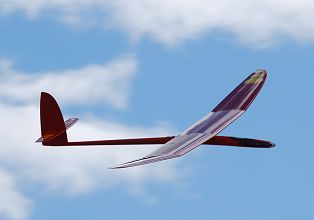
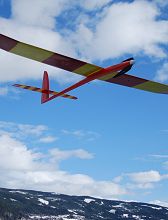
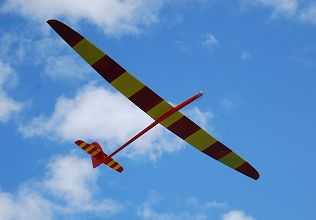
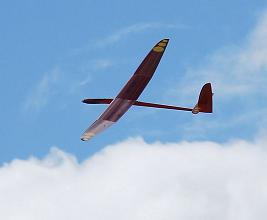
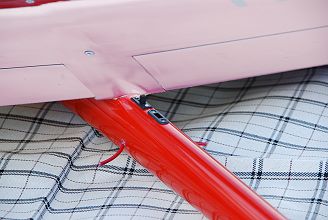
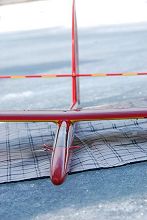
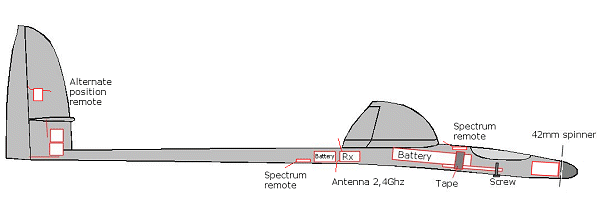
Read and see more about the first
flights HERE




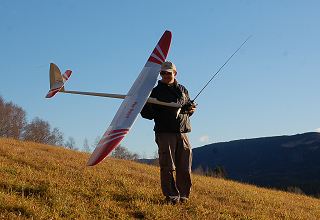
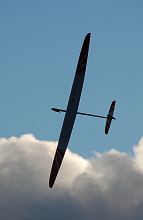
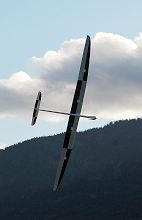
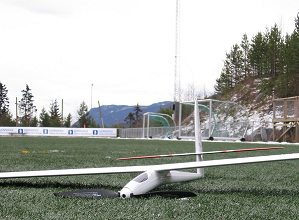
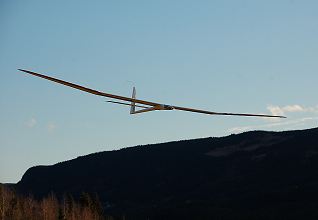
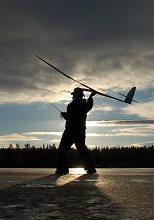
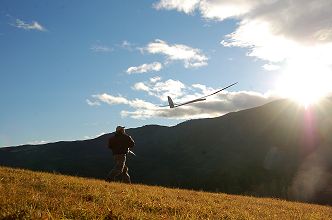
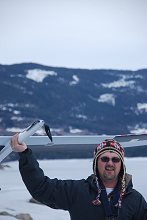
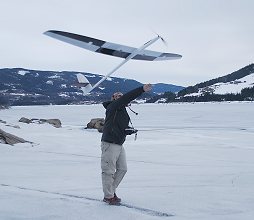


Pike Perfect
The Quest for the Ultimate F3J-Model
High quality moulded glider designs now dominate the F3J Class. The F3J pilot
has to decide which one of the many excellent models currently available he will
use in competition. The majority of these models offer excellent performance
potential, and are built to the highest standards now expected for competition
F3J models.

Philip Kolb with his Pike Perfect
Motors used for
electric
Pike Superior / Pike Giant / Pike Brio / Pike Perfect :
1)
17x13 prop
10x 1700CP pushed
controller 100-150A
apx 10m/s climb
2)
17x13 prop
6x 1700CP pushed
controller 80-100A
apx 6m/s climb
3)
20x11 prop
10x 1700CP pushed
controller 100-150A
apx 12m/s climb
4)
20x11 prop
8x 1700CP pushed
controller 80-100A
apx 8m/s climb
5)
18x11 prop
18xCP1300
apx ? climb
6)
17x10'' prop
10 cells (Sanyo 1950 AUP NiMh
pushed and matched)
controller 40-50A
7)
17x10'' prop
10 xCP1700
controller 70-100A
8)
Electronic
model Cyclon Elite 10
9)
Equipment used by Guillaume Bourely (Pike Superior carbon and
Pike Brio carbon):
The propeller is RFM 14.5x10 Slim.
Motor is an
Electronic Model Elios 25 geared 3.7/1
Controller Flash 40/60A
2 packs of TP 3S 2100 gen2 (draws 41A and can take 60A)
Also used with 10 cell CP1700 (37A)
Receiver Shulze 835w
Rx power: SBec (power from the battery)
All up weight 2540g
This setup gives apx 8-9 climbs to thermal altitude.
Suggested changes that can be made:
The propeller can be slightly bigger so that the current comes up to
55-60A. This will give faster climbs.
11)
Cheap example:
AXI 2820/10 outrunner
Aeronaut 14x8 (44A)
3S Lipo that takes 50A
50A controller
Apx 3.8m/s climb
Other:
Both Kontronik, Hacker, and
many others have competition drives that will
give a few more % of thrust or lighter. But this
should maybe be sold complete with
motor/controller/prop/battery from a dealer that
can tell the customer what to buy.

Copyright Samba model 2006




